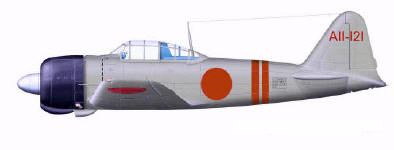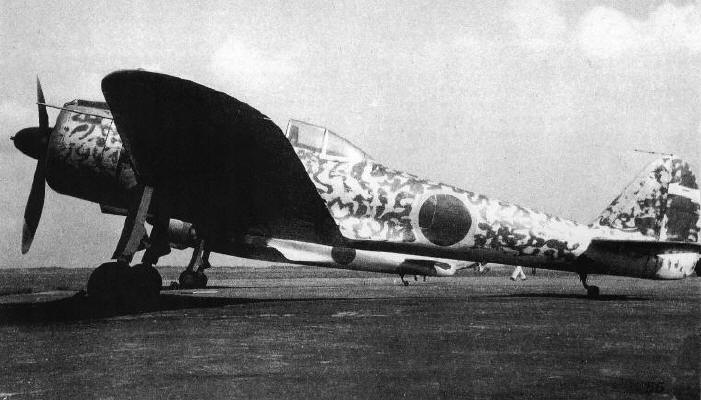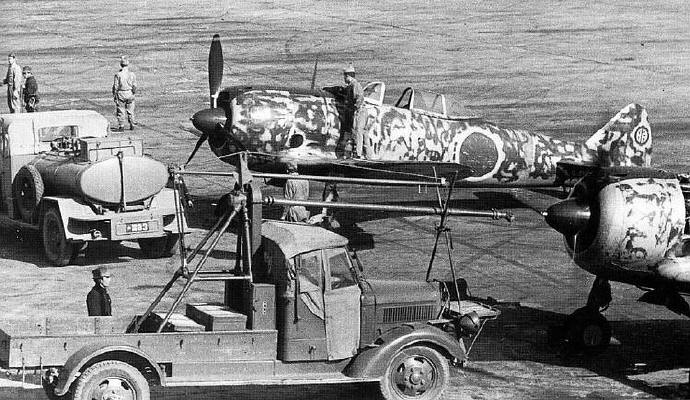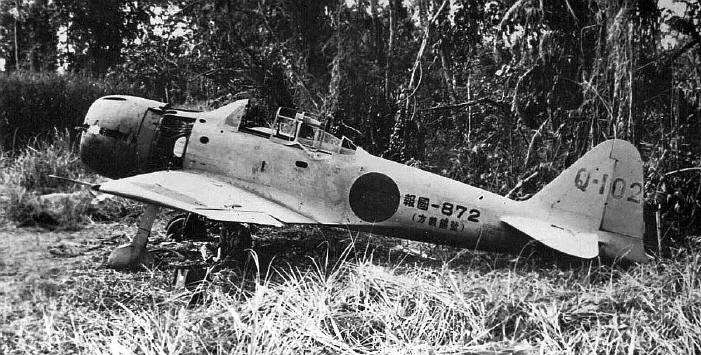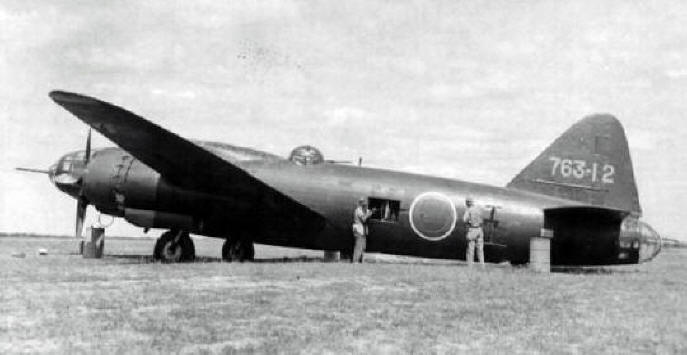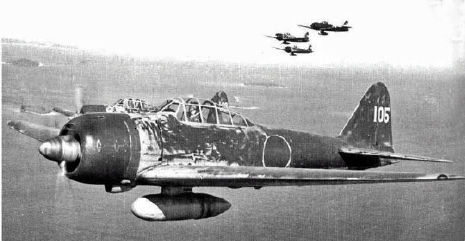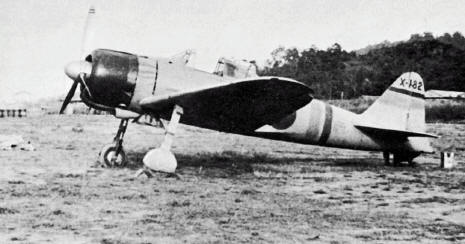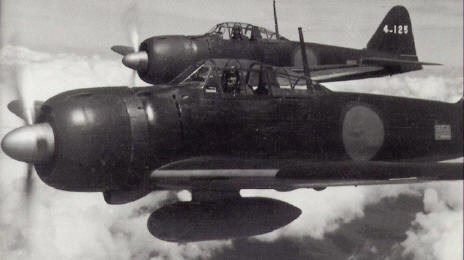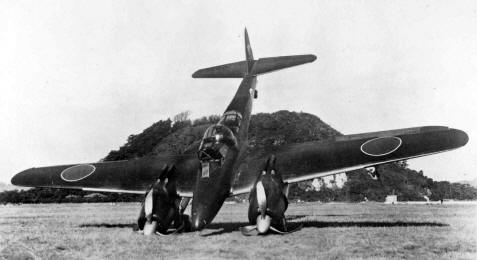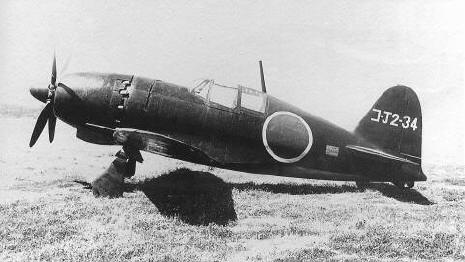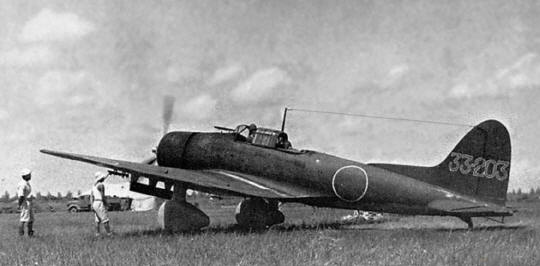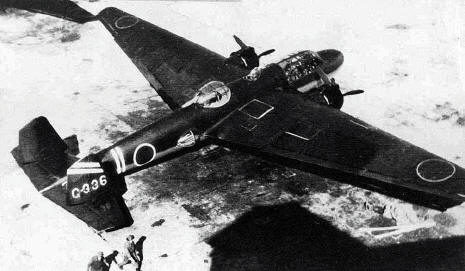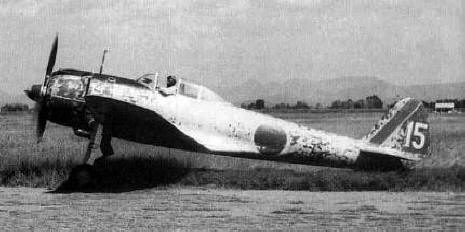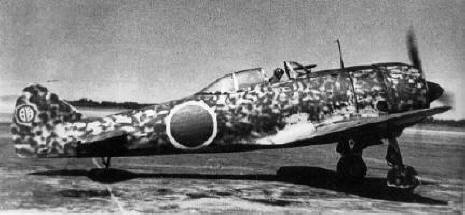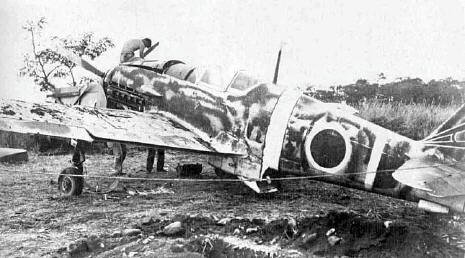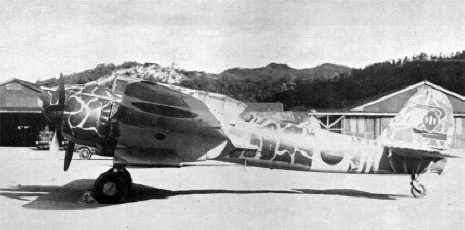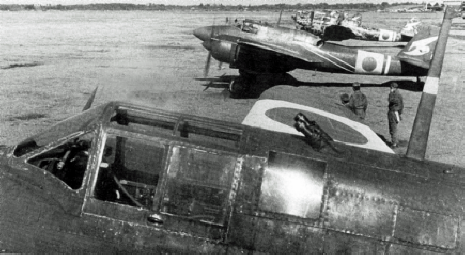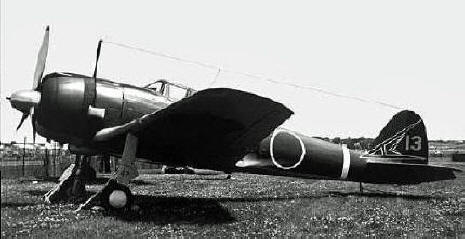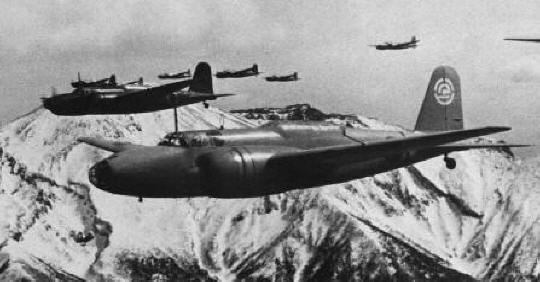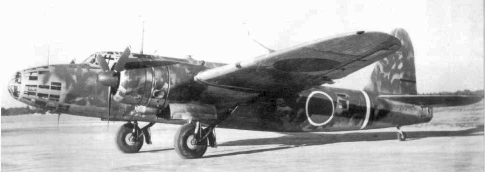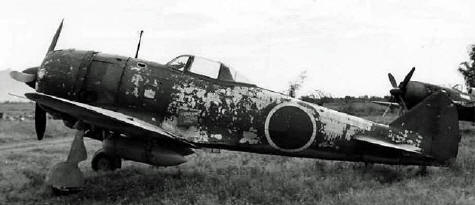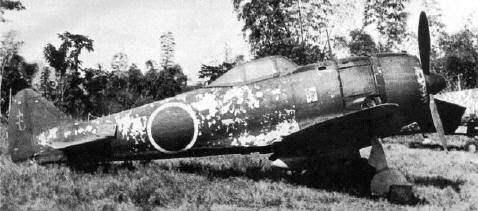|
|
The photo on the
left shows the A6M3 Zero flown by top pilot
Hiroyoshi Nishizawa of the "Tainan" Air Group on Rabaul. The unit insignia "V"
has been retouched away by the censor. If you look closely at the photo, you
will notice that bright spots are only just behind the cowling and they become
less and less towards the back. Another striking feature is the (almost)
straight dividing line from light to dark at the lower edge of the cockpit
glazing, whereby the struts are light throughout. A technical reason why the
paint on the cockpit struts is completely chipped, behind the cooling flaps
almost completely, but behind the national insignia almost not at all, has
not yet become clear to me.
In reality, the paint has not chipped off
at all in the light spots. On the bright spots you can still see the
original light gray color in which the machine was originally delivered.
Since they were forced to operate from land after June 4, 1942, and
appropriate camouflage seemed necessary, the dark green camouflage paint had
to be applied by hand afterwards. This did not have to be even, an irregular
pattern enhanced the camouflage. - But this was only during the transition
period to the later general standard, factory-applied dark green over
greenish gray. As before, always over a primer coat. Later on, small
abrasion marks could be seen in particularly stressed areas, but never
flaked paint. Because the
manufacturers worked equally for army and navy, there were no differences in
the quality of colors.
Color drawings (profiles) showing Japanese Navy
aircraft with large blank areas are far away from of reality. |
